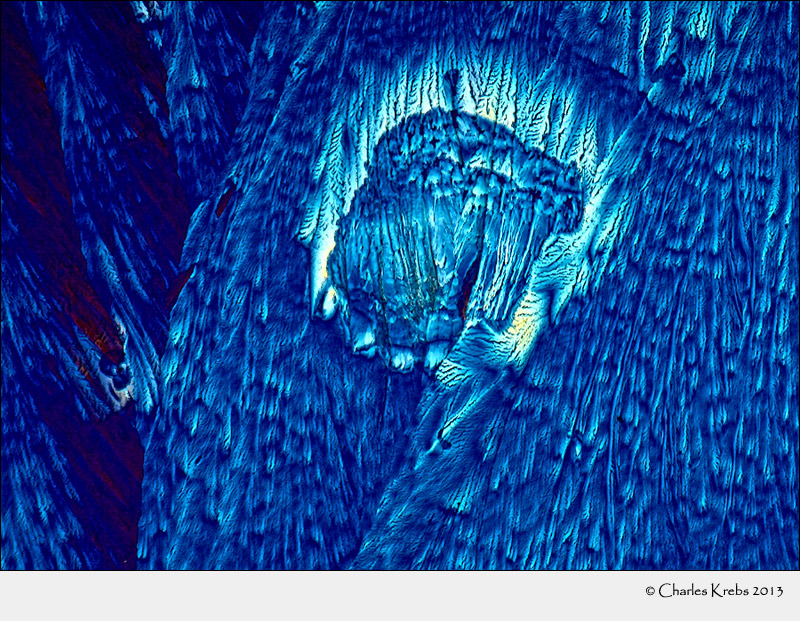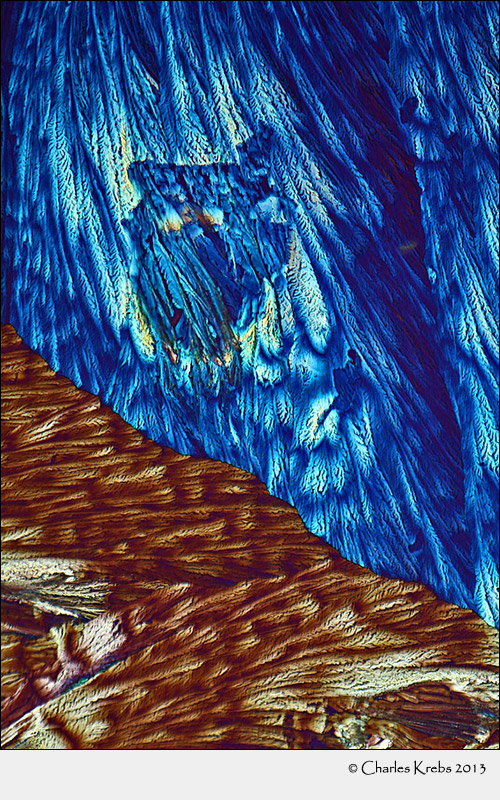Charlie, what are we looking for, as far as a pol filter that's more/less likely to work as an analyzer?
Really nothing different from a quality filter you might use on any high quality lens. Flat overall, and with plane-parallel surfaces that have very flat smooth surface qualities. That will minimize image degradation.
From the polarizing aspect you are looking for a high extinction rate when crossed, as well as a neutral color (especially when crossed). In use, both the lower and upper polarizers need these characteristics. The lower polarizer (typically under the condenser and not in the imaging path) need not have the best "imaging" characteristics but should be free of color bias and offer good extinction capability. No hesitation recommending the Edmund material for that.
The solution pictured above by chrismower shows how it can be done at a low price. Remember he said...
I tried about a dozen different 3D glasses until I found one that had very good clean flat thin plastic lenses.
... and had it mounted in a frame that provided a flatter surface than I had. So perhaps I was too hasty and strong in my comments about using the Edmund material. The piece I used was not held as "flat" as is possible. I should try it again with a better frame/holder. And it is entirely entirely possible that the optical ("imaging") characteristics from 3D glasses he tried are better than the piece I used.
And it is not like the results I obtained were useless... it is just that compared directly side-by-side with my Olympus analyzer I could see a difference in image resolution (but no significant difference in polarizing capability).
Here are a couple of shots of crystallized aspirin taken with the Techspec piece used as an analyzer.









